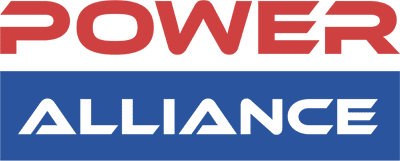Introduction
Owning a business has always come with its share of challenges, but today’s economic landscape presents unique and unprecedented struggles. From navigating the aftermath of global disruptions to embracing technological advancements, business owners find themselves in a constant state of adaptation and resilience. In this blog post, we’ll delve into some of the primary challenges faced by business owners today and explore potential strategies to overcome them.
Economic Uncertainty
One of the most significant challenges in the current economy is the pervasive sense of uncertainty. Factors such as fluctuating market conditions, geopolitical tensions, and unpredictable consumer behavior make it difficult for business owners to plan and forecast effectively. This uncertainty can lead to hesitancy in making critical decisions, such as expanding operations or investing in new ventures.
Strategies to Cope:
Diversification: By diversifying products or services, businesses can reduce dependency on a single revenue stream, thus minimizing risk.
Flexible Business Models: Adopting models that allow for quick adaptation, such as remote work or digital platforms, can help businesses remain agile.
Inflation and Rising Costs
Inflation rates have been on the rise, leading to increased costs for raw materials, labor, and transportation. This puts pressure on business owners to maintain profitability without alienating customers through higher prices.
Strategies to Cope:
Cost Analysis: Conducting regular cost analysis to identify areas for savings can help mitigate the impact of inflation.
Supplier Negotiations: Building strong relationships with suppliers can lead to favorable terms and pricing, providing some relief from rising costs.
Technological Advancements
While technology offers numerous opportunities for growth and efficiency, keeping up with rapid advancements can be daunting, especially for small business owners with limited resources. The pressure to digitize operations, enhance cybersecurity, and leverage data analytics can be overwhelming.
Strategies to Cope:
Invest in Training: Providing employees with the necessary training to utilize new technologies can improve efficiency and innovation.
Collaborate with Tech Partners: Partnering with technology firms can offer access to expertise and resources that might otherwise be out of reach.
Talent Acquisition and Retention
Attracting and retaining skilled labor is another significant challenge, exacerbated by the evolving expectations of the modern workforce, which values flexibility, work-life balance, and meaningful work.
Strategies to Cope:
Competitive Compensation: Offering competitive salaries and benefits can help attract top talent.
Cultivate a Positive Work Culture: Fostering an inclusive and supportive workplace can improve employee satisfaction and retention.
Navigating Regulatory Changes
Constant changes in regulations, particularly in industries such as healthcare, finance, and environmental sectors, require business owners to stay informed and compliant, which can be both time-consuming and costly.
Strategies to Cope:
Consult with Experts: Engaging with legal and regulatory experts can ensure compliance and prevent costly penalties.
Stay Informed: Regularly updating knowledge about industry-specific regulations can help businesses anticipate and adapt to changes.
Join a Mastermind Group: Mastermind groups allow business owners to collaborate with other likeminded individuals in the same industry.
Conclusion
The journey of a business owner in today’s economy is fraught with challenges, but it is also a journey filled with opportunities for growth and innovation. By adopting flexible strategies, staying informed, and fostering a resilient mindset, business owners can navigate these turbulent times and emerge stronger. Despite the struggles, the resilience and creativity of entrepreneurs continue to drive progress and success in the ever-evolving economic landscape.

